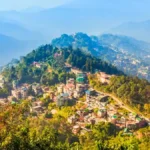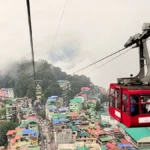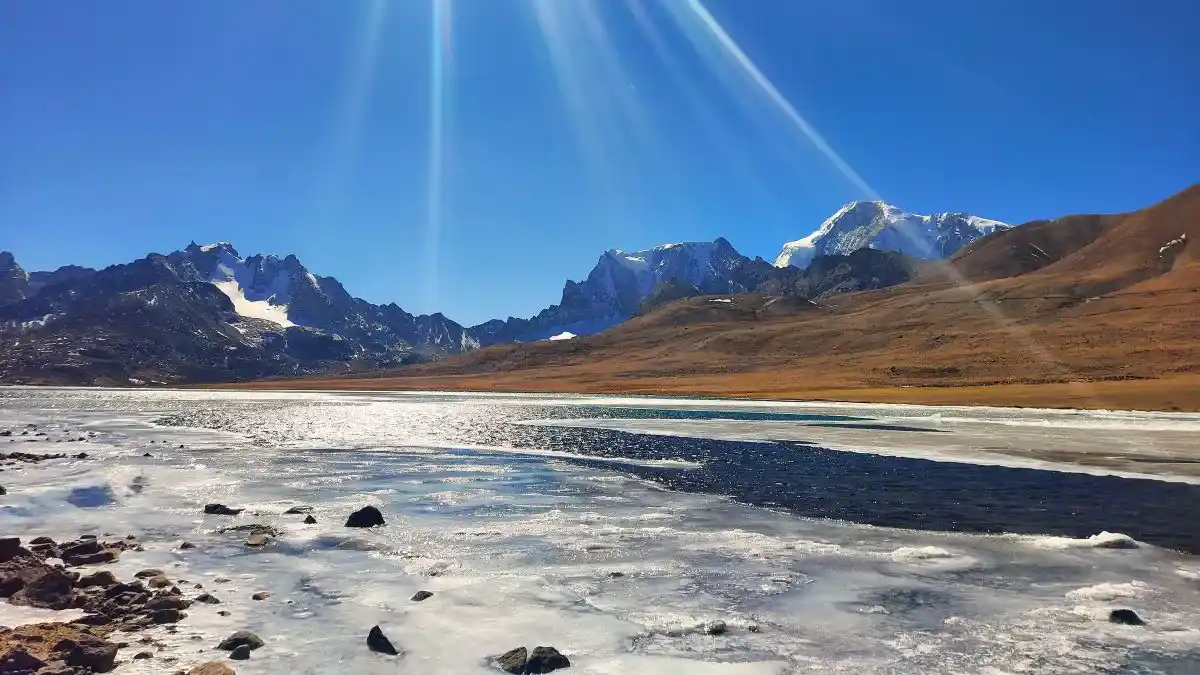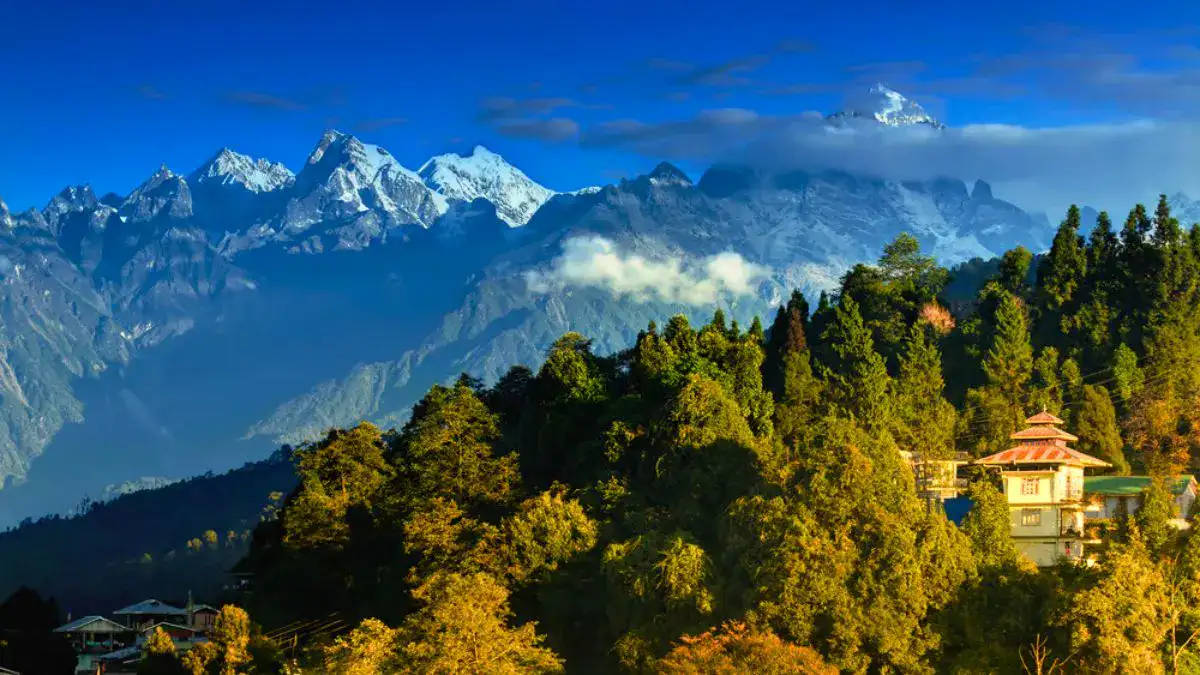Planning a trip to Sikkim from September 2024 to March 2025? Whether you’re looking for snow-capped mountains, vibrant festivals, or cultural experiences, Sikkim offers a lot. Before you pack your bags, here are 20 things you must know to make your trip smoother and more enjoyable.
1. Best Time to Visit Sikkim (September 24 to March 25)
Weather Overview
| Month | Average Temperature | Ideal Activities | Special Notes |
|---|---|---|---|
| September | 10°C to 21°C | Trekking, Sightseeing | Post-monsoon, clear skies |
| October | 7°C to 19°C | Cultural Tours, Festivals | Start of autumn, great weather |
| November | 4°C to 16°C | Wildlife Exploration | Cooler but not too cold |
| December | -4°C to 12°C | Snow Activities, Festivals | Cold, chance of snow in high areas |
| January | -5°C to 10°C | Snow Trekking, Skiing | Winter peak, heavy snowfall |
| February | -2°C to 13°C | Winter Sports | End of winter, still snowy |
| March | 5°C to 18°C | Trekking, Rhododendron View | Spring begins, pleasant weather |
Sikkim in Winter (December to February)
- Snow lovers can enjoy snow trekking, skiing, and visiting frozen lakes.
- However, some regions may close due to heavy snow, so check local conditions.
2. Cost for Two People: Sikkim Trip
The cost of traveling to Sikkim depends on the season, duration, and type of travel experience you want. Here’s an estimated budget for two people.
| Expense Category | Approximate Cost for Two People (INR) | 4 Days | 5 Days | 6 Days | 7 Days |
|---|---|---|---|---|---|
| Travel (Flights/Train) | 8,000 to 12,000 (Round-trip) | Same | Same | Same | Same |
| Permits | 600 to 1,200 | Same | Same | Same | Same |
| Accommodation | 4,000 to 8,000 (Budget) | 6,000 | 8,000 | 10,000 | 12,000 |
| Meals | 2,500 to 4,500 | 4,000 | 5,000 | 6,000 | 7,000 |
| Local Transport | 3,000 to 6,000 | 3,000 | 4,000 | 5,000 | 6,000 |
| Activities and Entry Fees | 2,000 to 5,000 | 2,500 | 3,500 | 4,500 | 5,500 |
Budget Estimate:
- 4 Days: INR 25,000 to 30,000
- 5 Days: INR 30,000 to 35,000
- 6 Days: INR 35,000 to 40,000
- 7 Days: INR 40,000 to 45,000
This is a rough estimate for a budget trip, including basic accommodations, meals, and transportation. Costs can vary depending on the season, choice of hotel, and activities.
3. Documents Required for Visiting North Sikkim
North Sikkim is a restricted area and requires special permits for both Indian and foreign nationals.
For Indian Nationals
- Valid Photo ID Proof: Aadhaar, Passport, or Voter ID
- 2 Passport-Sized Photographs: Required for permits
- Inner Line Permit (ILP): Can be obtained at the Tourism Office in Gangtok.
For Foreign Nationals
- Passport and Valid Visa
- 2 Passport-Sized Photographs
- Protected Area Permit (PAP): Required for areas like Gurudongmar Lake, Yumthang Valley, and Tsomgo Lake. Obtain from the Tourism Office in Gangtok or at border check-posts.
Ensure you carry multiple photocopies of your documents as they may be needed at various checkpoints.
4. Places to Visit in Sikkim
Gangtok
Sikkim’s capital offers a mix of culture, history, and nature.
Must-Visit Places in Gangtok:
- MG Marg (Shopping and food)
- Rumtek Monastery
- Tashi Viewpoint (Panoramic views of Kanchenjunga)
North Sikkim
North Sikkim is famous for its high-altitude lakes and stunning landscapes.
Places to Visit in North Sikkim:
- Gurudongmar Lake (One of the highest lakes in the world)
- Yumthang Valley (Also known as the “Valley of Flowers”)
- Lachung and Lachen Villages
South and West Sikkim
- Namchi: Known for the famous Char Dham and the gigantic statue of Guru Padmasambhava.
- Pelling: Offers breathtaking views of the Kanchenjunga range, Singshore Bridge, and the Rabdentse Ruins.
5. Sample Itineraries: 4 Days, 5 Days, 6 Days, 7 Days
Here are some sample itineraries depending on the number of days you’re planning to stay in Sikkim.
4-Day Itinerary: Gangtok and Tsomgo Lake
Day 1: Arrival in Gangtok, explore MG Marg and local markets
Day 2: Visit Tsomgo Lake, Baba Mandir (permit required)
Day 3: Explore Rumtek Monastery, Tashi Viewpoint, Hanuman Tok
Day 4: Depart from Gangtok
5-Day Itinerary: Gangtok and Pelling
Day 1: Arrive in Gangtok, visit MG Marg
Day 2: Tsomgo Lake and Baba Mandir tour
Day 3: Transfer to Pelling, visit Pemayangtse Monastery
Day 4: Explore Rabdentse Ruins and Khecheopalri Lake
Day 5: Return to Gangtok and departure
6-Day Itinerary: Gangtok, Tsomgo Lake, and North Sikkim
Day 1: Arrive in Gangtok, local sightseeing
Day 2: Tsomgo Lake and Baba Mandir
Day 3: Travel to Lachen, visit Chopta Valley
Day 4: Gurudongmar Lake visit, transfer to Lachung
Day 5: Yumthang Valley and Hot Springs, return to Gangtok
Day 6: Depart from Gangtok
7-Day Itinerary: Comprehensive Sikkim Experience
Day 1: Arrive in Gangtok, local sightseeing
Day 2: Visit Tsomgo Lake and Baba Mandir
Day 3: Travel to Lachen, stop by Chungthang
Day 4: Visit Gurudongmar Lake, transfer to Lachung
Day 5: Explore Yumthang Valley and Zero Point
Day 6: Return to Gangtok, Rumtek Monastery visit
Day 7: Departure
6. Connectivity in Sikkim: Internet and Mobile
Internet and mobile connectivity can be a concern in remote areas of Sikkim.
Best Networks
- Jio and Airtel: Work well in Gangtok, Pelling, and some areas of North Sikkim.
- Remote areas like Lachung, Lachen, and Tsomgo Lake may have poor connectivity, so download maps and keep important information offline.
7. Packing Essentials for Sikkim
Depending on the season you’re visiting, pack accordingly. Winters in Sikkim (December to February) require heavier clothes due to the snow.
Winter Packing List (December to February)
- Thermal wear, heavy jackets, gloves
Winter Packing List (December to February)
- Thermal Wear: Essential for keeping warm, especially in higher altitudes.
- Heavy Jackets: Insulated jackets that can withstand low temperatures.
- Gloves and Scarves: These accessories are crucial for protecting extremities from the cold.
- Snow Boots: Sturdy footwear with good grip is necessary for navigating snowy terrains.
- Sunglasses: Protect your eyes from UV rays reflected off the snow.
- First-Aid Kit: Always good to have, especially when trekking or in remote areas.
Autumn Packing List (September to November)
- Light Jackets: Comfortable layers are ideal as temperatures can vary throughout the day.
- Hiking Shoes: Durable shoes for trekking on varying terrain.
- Raincoat or Poncho: Sudden showers can occur even in autumn, so be prepared.
8. Transportation Options Within Sikkim
Navigating Sikkim requires some planning, especially due to its hilly terrain. Here’s a look at transportation options:
Public Transport
- Shared Taxis: The most economical way to travel between towns and attractions. They run frequently and are widely available.
- Private Cabs: If you prefer a more comfortable journey, hiring a private cab for a day or two is an option. Rates are negotiable.
Renting Bikes
Renting a bike in Gangtok can provide you with the freedom to explore at your own pace. However, ensure you’re confident riding on hilly and potentially rough roads.
Local Buses
State-run buses are available but may not be the most convenient option for tourists due to limited schedules.
9. Important Emergency Contacts
It’s wise to have local emergency contact numbers readily available, especially in remote regions. Here are some important contacts:
| Service | Contact Number |
|---|---|
| Ambulance | 102 |
| Police | 100 |
| Tourist Helpline | +91-3592-207426 |
| Disaster Management | +91-3592-205301 |
Keep these numbers saved in your phone and write them down in your travel notebook for easy access.
10. Internet and Mobile Connectivity
Connectivity can be an issue in remote areas, so plan accordingly:
Best Networks
- Jio and Airtel: These networks generally provide the best coverage in major towns like Gangtok and Pelling.
- Offline Maps: Download Google Maps or offline navigation apps before heading to remote locations.
Tips for Staying Connected
- Carry a power bank to ensure your devices remain charged, especially when traveling to areas with limited charging facilities.
- Inquire about Wi-Fi availability at your accommodation if you need to stay connected.
11. Sikkim’s Local Food: Must-Try Dishes
Sikkim boasts a unique culinary scene influenced by various cultures. Here’s a list of must-try dishes:
- Momos: Dumplings that can be steamed or fried, filled with meat or vegetables. A local favorite!
- Thukpa: A flavorful noodle soup, often enjoyed hot, perfect for cold days.
- Phagshapa: A traditional dish made with pork and radish, seasoned with spices for a hearty meal.
- Gya Kho: A type of Sikkimese bread, perfect for pairing with local curries.
- Sel Roti: A traditional rice-based doughnut, often enjoyed during festivals.
Most meals range from INR 100 to 500 depending on where you eat, so budget accordingly.
12. Respect Local Culture and Customs
Sikkim is rich in culture, with a mix of Buddhist and Hindu traditions. Understanding local customs is important for a respectful experience.
Cultural Etiquette
- Monasteries: Always remove your shoes and maintain silence while visiting.
- Photography: Ask for permission before taking pictures of people or sacred sites.
- Dress Modestly: Especially when visiting religious sites.
13. Local Markets and Shopping
Shopping in Sikkim offers a range of local handicrafts, traditional attire, and souvenirs. Here are some popular shopping spots:
Must-Visit Markets
- MG Marg, Gangtok: A bustling street for shopping and dining.
- Lal Market: Great for local produce and souvenirs.
- Pelling Market: Offers handmade crafts and traditional Sikkimese clothing.
Tips for Shopping
- Bargaining is common, so don’t hesitate to negotiate prices.
- Look for local handicrafts like Thangka paintings, woolen clothes, and organic teas.
14. Local Wildlife and Eco-Tourism
Sikkim is home to diverse flora and fauna, making eco-tourism a popular activity.
Wildlife Sanctuaries
- Khangchendzonga National Park: A UNESCO World Heritage Site known for its rich biodiversity.
- Fambong Lho Wildlife Sanctuary: Located near Gangtok, it’s a haven for bird watchers and nature lovers.
Eco-Tourism Activities
- Bird Watching: Ideal in autumn, when many migratory birds arrive.
- Trekking: Several eco-trails allow you to immerse yourself in nature.
15. Safety Tips for Travelers
Sikkim is generally safe for tourists, but it’s always good to take precautions.
Safety Tips
- Avoid isolated areas at night: Stick to well-lit and populated areas.
- Keep valuables secure: Use a money belt or hidden pouch for important documents and cash.
- Stay hydrated and acclimatized: Especially when traveling to higher altitudes. Drink plenty of water and take it slow.
16. Important Festivals in Sikkim
If your visit coincides with local festivals, it’s an excellent way to experience Sikkim’s vibrant culture.
Key Festivals
| Festival Name | Month | Activities |
|---|---|---|
| Losar Festival | February | Tibetan New Year celebrations, dances, food |
| Bumchu Festival | March | Sacred water ceremony in Tashiding Monastery |
| Dasain | October | Hindu festival celebrated with local customs |
Make sure to check local calendars as festival dates can vary each year.
17. Adventure Activities in Sikkim
Sikkim offers a variety of adventure sports for thrill-seekers. Here’s a quick overview of activities available:
Popular Adventure Activities
| Activity | Best Time | Locations |
|---|---|---|
| River Rafting | September to November | Teesta River |
| Paragliding | October to March | Gangtok |
| Trekking (High Altitude) | September to November | Dzongri, Goecha La |
| Snowboarding & Skiing | December to February | Lachung, Yumthang Valley |
These activities are best enjoyed during specific months, so plan accordingly based on your interests.
18. Unique Souvenirs to Bring Back
Bring a piece of Sikkim back home with you by shopping for unique souvenirs.
Must-Buy Souvenirs
- Thangka Paintings: Beautiful religious art that reflects local culture.
- Organic Tea: Sikkim is known for its high-quality tea.
- Handwoven Fabrics: Traditional attire like shawls and scarves.
- Local Spices: Unique spices to add flavor to your cooking.
By keeping these 20 essential tips in mind, you’re set for a fantastic trip to Sikkim from September 2024 to March 2025. This vibrant state offers a wealth of experiences, from breathtaking landscapes to rich cultural interactions. Whether you’re trekking through the mountains or savoring local delicacies, Sikkim is sure to leave a lasting impression. Enjoy your journey!
Frequently Asked Question
What is the best time to visit Sikkim?

The best time to visit Sikkim is between September and June. September to November offers clear skies and pleasant temperatures, while December to February is ideal for snow lovers.
How do I reach Sikkim?

Sikkim is accessible by air, train, and road. The nearest airport is Bagdogra (IXB), about 125 km away from Gangtok. You can take a taxi or shared jeep from Bagdogra to Gangtok. The nearest major railway station is New Jalpaiguri (NJP).
What are the necessary permits for visiting North Sikkim?

Indian nationals require an Inner Line Permit (ILP), while foreign nationals need a Protected Area Permit (PAP). These can be obtained in Gangtok or at designated checkpoints.
What is the average cost for a trip to Sikkim for two people?

The cost for two people can range from INR 25,000 to INR 45,000, depending on the duration of stay, type of accommodation, and activities planned.
What should I pack for my trip to Sikkim?

Essential items include warm clothing (if visiting in winter), trekking shoes, rain gear, personal medications, and a first-aid kit. Don’t forget your travel documents and camera!
Are there any adventure activities in Sikkim?

Yes! Sikkim offers a variety of adventure activities such as trekking, river rafting, paragliding, and snowboarding, especially in areas like North Sikkim and around Gangtok.
Is Sikkim safe for tourists?

Yes, Sikkim is generally considered safe for tourists. However, it’s advisable to follow basic safety precautions, such as avoiding isolated areas at night and keeping valuables secure.



















